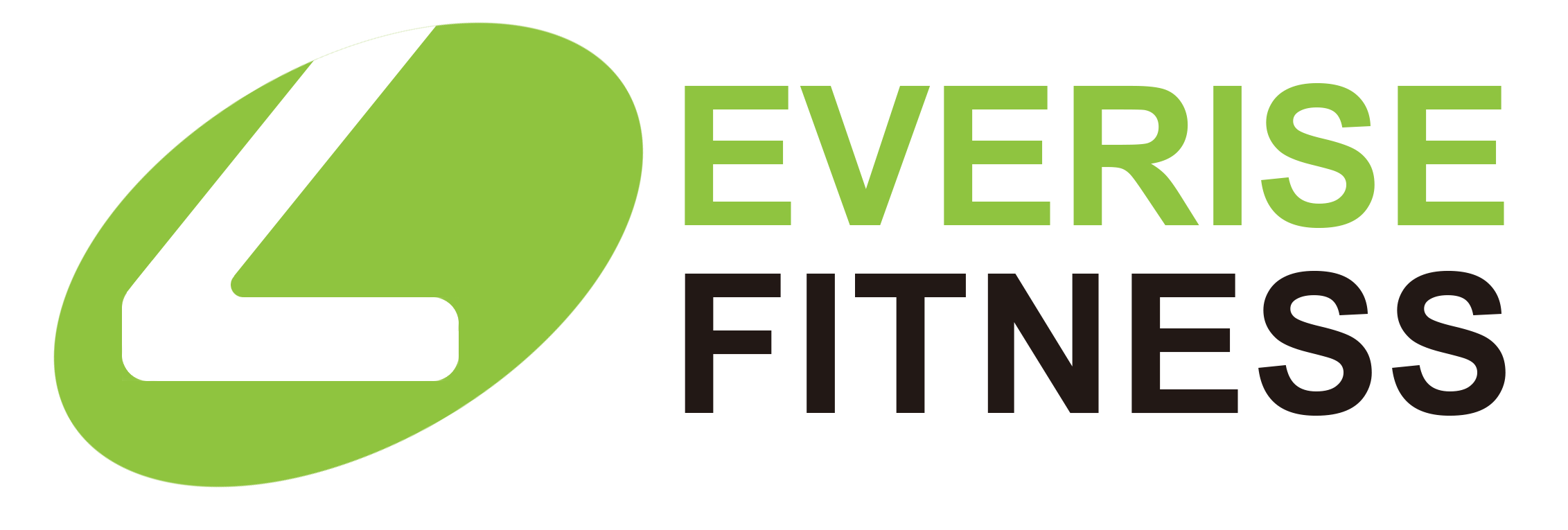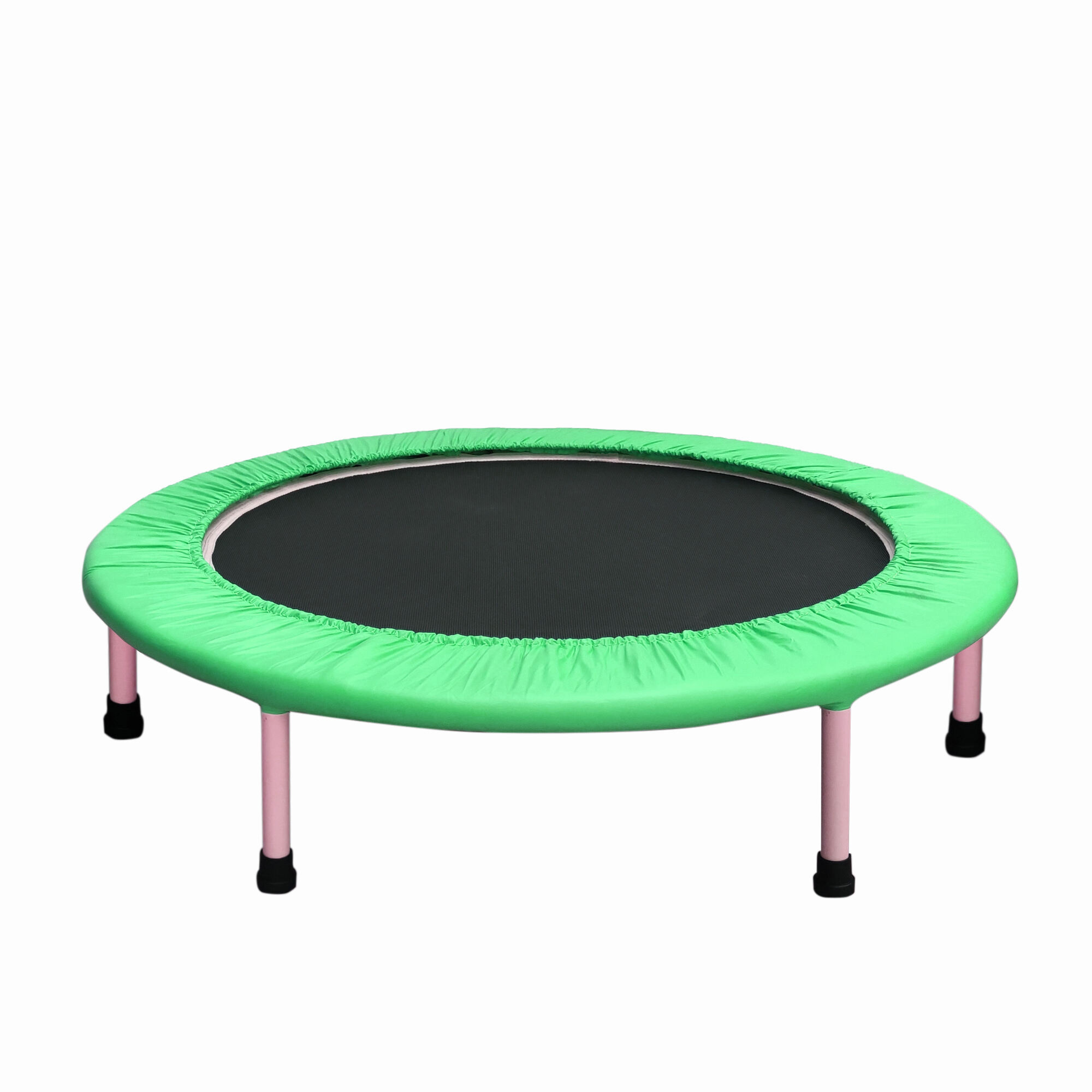Ტრადიციული და ტრამპლინზე პილატესის განსაზღვრა
Ტრადიციული პილატესი: ძირითადი პრინციპები და მეთოდები
Ტრადიციული პილატესი მოდის იოსებ პილატესის საწყისი მეთოდებიდან, რაც დაკავშირებულია ჩვენი აზროვნების და ჩვენი სხეულის მოძრაობის გაერთიანებასთან. პრაქტიკა მუშაობს ძირითადად ძირითადი ძალის შესაქმნელად, ხოლო ასევე უზრუნველყოფს სწორ გამართულობას. ადამიანები ასევე იყენებენ სხვადასხვა აღჭურვილობასაც - მაგალითად, მატები, დიდი ზამბარიანი რეფორმერის მანქანები, ასევე სხვა სპეციალური მოწყობილობები. რაც განსაკუთრებულად გამოყოფს ტრადიციულ პილატესს, არის ნელი, კონტროლირებული მოძრაობების კომბინაცია კონკრეტული სუნთქვის ნიმუშებთან. ეს ხელს უწყობს მარჯვენა მენჯის არეში და მხრებში სტაბილურობის მიღწევას დროის განმავლობაში. კვლევები მიუთითებს ზოგიერთ სასარგებლო შედეგზე ტრადიციული პილატესის გაკვეთილების გავლისას. გამოჩნდება გაუმჯობესებული გაჭიმულობა და უკეთ ბალანსი, რაც მნიშვნელოვანია ყოველდღიური საქმიანობისთვის. ბევრი ადამიანისთვის გამოჩნდა სასარგებლო შედეგი პილატესში მონაწილეობის შემდეგ, რომ მათი პოსტურა გაუმჯობესდა და ისინი უფრო მეტად ყურადღებას აქცევენ სხეულის შეგრძნებას მოძრაობის დროს. ამიტომ ბევრი ადამიანისთვის პილატესი სასარგებლოა როგორც ფიზიკურად, ასევე ფსიქიკურად, როდესაც ეძებენ სასურველ ვარჯიშებს ყოველდღიური რეჟიმისთვის.
Ტრამპლინზე პილატესი: ათვისების ფიტნესის ევოლუცია
Ტრამპლინზე პილატესი აძლევს სრულიად ახალ მიმართულებას ჩვეულებრივ პილატესის სავარჯიშოებს, ხოლო მოძრაობების შერწყმით. სპეციფიკური ის არის, რომ ის სახიფათო არ არის სახსრებისთვის, მაგრამ მაინც იძლევა შედეგს. ადამიანები ნებისმიერი ასაკის სავარჯიშოს სიყვარულს ამბობენ, რადგან ის უფრო მეტად თამაშად გრია, ვიდრე ვარჯიშად, ტრამპლინზე. როდესაც ადამიანი ტრამპლინზე ასრულებს ასეთ სავარჯიშოებს, კუნთები ერთად მუშაობენ ისეთნაირად, როგორც ისინი იმუშავებენ ჩვეულებრივ იატაკზე ვარჯიშის დროს. კვლევებმა აჩვენა, რომ მსივების მსგავსად მსუბუქად ხტომა დახმარებას უწევს ბალანსის გაუმჯობესებაში და ის ისე არ გრია, როგორც რბენა ან წონების აწევა. ამიტომ ბევრი ადამიანისთვის ტრამპლინზე პილატესი არის საუკეთესო არჩევანი, როდესაც სურს სრული სხეულის ვარჯიში იმ დატვირთვის გარეშე, რომელიც ატანს დაბრუნებულ მდგომარეობას მეტსა და მხედველებს.
Ტექნიკისა და მოწყობილობების ძირითადი განსხვავებები
Მოწყობილობების შედარება: მატები და ტრამპლინები
Ტრადიციული პილატესი ჩვეულებრივ ეყრდნობა მარტივ მატებს ან რეფორმერის მანქანებს, სადაც ადამიანები მუშაობენ თავისი საკუთარი წონის წინააღმდეგ. აქ აქცენტი გაკეთებულია ნელ, დამახასიათებელ მოძრაობებზე, რომლებიც უზრუნველყოფს ძირითადი ძალის გაძლიერებას და ბალანსის გაუმჯობესებას. მეორე მხრივ, ტრამპლინზე პილატესი შეიცავს ბურთების მსგავს ტრამპლინებს, რაც სრულიად განსხვავებულად ცვლის საქმეს. გრავიტაციის წინააღმდეგ ბრძოლის ნაცვლად, ადამიანები იღებენ ამ სახის სახალისო წინაღობას ნახტომის დროს, რაც აკეთებს ვარჯიშებს სახალისო და სხვადასხვა გზით მომწიფებელს. გარდა ამისა, ტრამპლინები შთანთქავს საკმარისად დარტყმის დარტყმას სახსრებზე, ასე რომ უფროსი ასაკის ადამიანები ან ნებისმიერი ადამიანი მენჯის პრობლემებით შეიძლება იპოვონ ისინი უფრო მსუბუქად სხეულისთვის შედარებით ჩვეულებრივი ივლის სავარჯიშოებისა. ამ ვარიანტების შორის არჩევანი მნიშვნელოვანია სესიების მაქსიმალურად გამოყენებისთვის, ვინაიდან თითოეული მოწყობილობა განსხვავებულ შედეგებს აძლევს იმის მიხედვით, თუ რა ფიზიკურ მიზნებს უმიზნებს ადამიანი.
Მოძრაობის დინამიკა: სტაბილურობა წინა აღდგენის მოვლენას
Რეგულარული პილატესის ფოკუსი ძირითადად ბირთვის სტაბილურობაზეა, მოძრაობებით, რომლებიც საჭიროებენ სიმაგრის მოსამატებლად ზუსტ კონტროლს, სრულყოფილი ფორმის შენარჩუნებით. თუმცა ტრამპლინზე პილატესი სხვაგვარად მუშაობს, ის ამატებს ბრტყელობას საშუალებათა შორის. ზემოთ და ქვემოთ მოძრაობა იტაცება სრულიად განსხვავებული სტაბილიზატორული კვებით, ქმნის იმას, რასაც ბევრი აღწერს როგორც სრულიად ახალი სახის სავარჯიშო შთაბეჭდილებას. ადამიანები, რომლებიც ცდილობენ ორივეს, ხშირად ამჩნევენ განსხვავებას იმაში, თუ როგორ უპასუხებს მათი სხეული სტაბილურობის მოგებას, შესაძლოა ნელა მოხდეს, მაგრამ აუცილებლივ არსებობს რაღაც განსაკუთრებული იმ სიმაგრის აშენების გზაში, რომელიც ხდება ამ ბრტყელი მოძრაობებით. ზოგი კვლევა აჩვენებს, რომ ხტომზე დამყარებული ვარჯიშები ნამდვილად უფრო კარგად აძლევს სისხლძარღვთა სისტემას, ვიდრე ტრადიციული სარდაფის მუშაობა, რაც ახსნის, რატომ არიან იმდენი ადამიანი დამოკიდებული ამ ბრტყელ ვერსიაზე პილატესის.
Წინაღობის ინსტრუმენტების როლი: იოგის სტრეპები და ზამბარები
Წინა წინაღობის მასალას აქვს მნიშვნელოვანი მნიშვნელობა ტრადიციულ პილატესში ტრამპლინზე პილატესთან შედარებით, მიუხედავად იმისა, რომ ისინი სხვადასხვა გზით მოქმედებენ. უმეტესობა ტრადიციული კლასებისა იყენებს იმ გრძელ ჭრიან რემებს, რომლებიც ხელს უწყობს ადამიანების უკეთ მოძრაობას და სტაბილურობას სავარჯიშოების დროს. როდესაც ჩვენ გადავდივართ ტრამპლინზე პილატესზე, სიტუაცია იცვლება, რადგან თვითონ ტრამპლინი არის ჩაშენებული ზამბარებით, რომლებიც ბუნებრივად ქმნიან წინა წინაღობას. ეს ზამბარები საშუალებას აძლევს ინსტრუქტორებს შეცვალონ იმის სირთულე, თუ როგორ გრძნობს ვარჯიშს, უბრალოდ მატის პოზიციის შეცვლით. წინა წინაღობის სხვადასხვა დონეების არსებობა მკვეთრად ცვლის იმ სავარჯიშოს ტიპს, რომელსაც ადამიანი იღებს. ბევრი ტრენერი საკმარისად გამოიყენებს სხვადასხვა სახის წინა წინაღობის ინსტრუმენტების შერევას, რადგან ეს ხელს უწყობს ფიზიკური მომზადების საზღვრების გადალახვას და საშუალებას იძლევა ადამიანებს გააკეთონ კონკრეტული მიზნები, როგორიცაა კუნთების დამუშაობა ან გამოსახულების გაზრდა დროის განმავლობაში.
Ჯანმრთელობის სარგოების შედარება
Მუცლის ძალისა და მობილობის მოგება
Ტრადიციული პილატესის და ტრამპლინზე პილატესის გაკეთება მუშაობს ძირითადი ძალის გასამაგრებაზე, რაც მნიშვნელოვანია ფიზიკური ფორმის შესანარჩუნებლად და დაზიანებების თავიდან ასაცილებლად. ტრადიციულ პილატესში ადამიანები უფრო მაღალ მოქნილობაზე ამუშავებენ, ყურადღებით აკონტროლებენ თითოეული მოძრაობის შესრულებას, რაც უზრუნველყოფს ბალანსს და საშუალებას იძლევა მუსკულის გაძლიერებას დროის განმავლობაში. თუმცა, ვინც ცდილობს ტრამპლინზე პილატესს, ხშირად აღმოაჩენს, რომ მოქნილობა უფრო სწრაფად იმატებს, რადგან მოძრაობების სხვადასხვა გზით შესასრულებლად იძლევა შესაძლებლობას, რაც მატარებელზე შეუძლებელია. გარდა ამისა, ტრამპლინზე ხომალზე გახტომა იწყებს ვარჯიშს სახიფათო და მომხიბლავს ხდის. უმეტესობა იმყოფება მის გაკეთებაში უფრო გრძელ ვადაზე, როდესაც ვარჯიში ამანათს გარდა აქცევს დამანატრებელ საქმიანობად, ამიტომ ასეთი სახის ტრენინგი გრძელვადიან პერიოდში უკეთეს შედეგებს იძლევა.
Სახსრებზე ზემოქმედება: ტრამპლინი სახსრების აღდგენისთვის
Ადამიანები, რომლებიც სახსრების პრობლემებიდან აღდგენენ ჯანმრთელობას, აღმოაჩენენ, რომ ტრამპლინზე პილატესი მათთვის საკმარისად სასარგებლოა, რადგან ის სხეულზე ნაკლებ დატვირთვას უზრუნველყოფს ვიდრე ჩვეულებრივი ვარჯიშები. მიუხედავად იმისა, რომ სტანდარტული პილატესიც გთავაზობთ ნაზ ვარჯიშებს, ტრამპლინზე პილატესის განსაკუთრებულობა იმაში მდგომარეობს, რომ ნაზად გადახტომა დროის განმავლობაში სახსრებზე დადებით გავლენას ახდენს. კვლევები აჩვენებენ, რომ როდესაც ადამიანი ტრამპლინზე მოძრაობს, ზედაპირი ფიზიკურად იცავს მგრძნობიარე ადგილებს და ამასთან უზრუნველყოფს მათ გარშემო მუსკულატურის გამაგრებას. ექიმები და ფიზიკური თერაპიის სპეციალისტები ხშირად გვირჩევენ ასეთ მოვლენებს აღდგენის პერიოდში. ბევრი პაციენტის მიხედვით, რამდენიმე სესიის შემდეგ აღინიშნება სხეულის მოძრაობის საშუალების გაუმჯობესება, ასევე სახსრების ძლიერი შთაბეჭდილება იმ ტკივილის გარეშე, რომელიც სხვა სავარჯიშო მეთოდებთან არის დაკავშირებული.
Ტრამპლინზე გაკეთებული კარდიოვასკულური გაუმჯობესება
Ტრამპლინზე პილატესი ადამიანებს უზრუნველყოფს გულის სასიამოვნო ვარჯიშს სახსრებზე დატვირთვის გარეშე. ხოლო ჩვეულებრივი პილატესი აქცენტს აკეთებს სიმყარის დამაგრებაზე კონტროლირებული მოძრაობებით, ტრამპლინზე ხტომა კი გულს უფრო ინტენსიურად აარტებს. კვლევები აჩვენებენ, რომ ასეთი სახის ვარჯიშები გულის და სისხლძარღვთა სისტემის მომსახურებას სწრაფად ამაღლებს. კარგი ამბავია, რომ ამ ვარჯიშის სახეობა არ შემოიფარგლება მხოლოდ სირბილის ან ველოსიპედით სიარულის შესრულებით. ბევრი ადამიანისთვის ეს ვარჯიში სახიფათოა, რადგან ის გულის სავარჯიშოს აერთიანებს სრული სხეულის გასავლელად, რაც საუკეთესო არჩევანია იმ ადამიანებისთვის, რომლებიც სურთ გააუმჯობესონ ჯანმრთელობა და ფიზიკური ფორმა.
Თქვენი პრაქტიკის არჩევა: მიზნები და ხელმისაწვდომობა
Სპორტული მიზნების შესაბამისობა: აღდგენა ვს. სპორტული ტრენინგი
Ჩვეულებრივი პილატესის და ტრამპლინზე პილატესის არჩევანი დამოკიდებულია იმაზე, თუ რისი მიღწევა სურს ადამიანს ვარჯიშის დროს. ჩვეულებრივი პილატესი უფრო მეტად აღდგენით ვარჯიშებზეა დაფოკუსირებული, რადგან ის ნელი, კონტროლირებადი მოძრაობებით და მუშაობს ძირითადი კუნთების გასამაგრებაზე, რაც დახმარებას ახდენს დაზიანებების შემდეგ აღდგენაში. ტრამპლინზე პილატესი კი სრულიად სხვა მიმართულებას უკეთებს ამ საქმეს, ის საინტერესო და სრულიად სხეულისთვის დამტანი ვარჯიშია, რაც ააჩქარებს გულისცემას და უზრუნველყოფს კუნთების დატვირთვას. ფიტნესის ექსპერტები რეკომენდებენ, რომ ადამიანები არჩევანი გაკეთონ იმის მიხედვით, თუ რა არის მათთვის ყველაზე მნიშვნელოვანი, რათა მაქსიმალურად ეფექტუალურად გამოიყენონ თავისი ძალები. ორივე სტილი სხვადასხვა აუდიტორიას იზიდავს, მაგრამ ტრამპლინზე პილატესი განსაკუთრებით გამოირჩევა ჯგუფურ სესიებში, სადაც მონაწილეები ერთმანეთს უფრო მაღალ დატვირთვაზე ადარბას. ამ მიდგომების განსხვავების გააზრება დაეხმარება ნებისმიერ ადამიანს პილატესის სწორი სტილის არჩევაში თავისი ფიტნეს მიზნების და მოთხოვნების შესაბამისად.
Სივრცისა და ბიუჯეტის გათვალისწინება
Როდესაც ვისმე ცდილობს პილატესის გაკეთებას, სივრცე და ფული მნიშვნელოვან როლს თამაშობს. ჩვეულებრივი პილატესის გაკვეთილებისთვის ხშირად სტუდიაში სადილად სჭირდება, რაც სწრაფად ძვირი შეიძლება იყოს, განსაკუთრებით თუ გაკვეთილი მრავალ სპეციალურ მოწყობილობას მოიცავს. თუმცა ტრამპლინზე პილატესი განსხვავებულ ისტორიას გვიყვება. უმეტესობა ადამიანისთვის შესაძლებელია ამ ვერსიის სახლში გაკეთება მცირე სივრცით და გადახდილი დიდი თანხის გარეშე. როდესაც ვხედავთ იმ ფასებს, რასაც ადამიანები ნამდვილად იხდიან გაკვეთილებისთვის, ფასების საკმარისად ფართო დიაპაზონი ვხედავთ, მაგრამ ტრამპლინზე სესიების ფასი მიუხედავად იმისა, რომ უმეტეს ვარჯიშებში იაფია, ვიდრე ტრადიციული ვარიანტები სასურველია ფიტნეს და საზოგადოებრივ ცენტრებში. ამ პრაქტიკულმა განხილვებმა მოახდინეს გავლენა იმაზე, აირჩიონ თუ არა ადამიანებმა ჩვეულებრივი პილატესი თუ გადავიდნენ ტრამპლინზე ვერსიაზე, რაც ფულის დანახარჯვის მხრივ მნიშვნელოვან განსხვავებას წარმოადგენს.
Დამატებითი მიდგომები: Bungee Fitness Connections
Ბანჯი ფიტნესი თან უფრო მეტ ადამიანს იზიდავს, რადგან იგი ტრადიციულ პილატესთან და ტრამპლინზე ვარჯიშებთან ერთად ახალ მოძრაობებს ამატებს, რაც ვარჯიშებს უფრო საინტერესოს ხდის. როდესაც ვინმე ახლანდელ პილატესის რუტინაში ბანჯის ელემენტებს ამატებს, ის ფიზიკური გამოწვევების სხვადასხვა სახეობას განიცდის, რაც მიმზღვავს ადამიანებს, რომლებიც სიახლეს ეძებენ თავისი ვარჯიშების რუტინაში. ტრამპლინის გამოყენებიდან მიღებული საუკეთესო მხარდაჭერის შერწყმა ბანჯის გაჭიმვადობასთან ქმნის რაღაც სახის სიმომხმარეს, მაგრამ ეფექტურს ორივე ვარჯიშისთვის, რაც მთელ ვარჯიშს უფრო მნიშვნელოვანს ხდის. უმეტესობა მასწავლებლების ამ კომბინაციის გამოცდას სთავაზობს, რადგან ის უზრუნველყოფს ცვლილებას, რაც ახმარება ადამიანებს დიდი ხანი შეინარჩუნონ მოტივაცია და უკეთესი შედეგები მიაღწიონ თავისი სესიებისას. ასეთი სახის ინოვაციების ჩამატება ჩვეულებრივ პილატესის კლასებში არ უბრალოდ ვარჯიშების არსებული არსებული ასორტიმენტის გაფართოებას უზრუნველყოფს, არამედ დახმარებას ახდენს წევრების შემონახვაში და კვირა-კვირა დაბრუნებაში.

